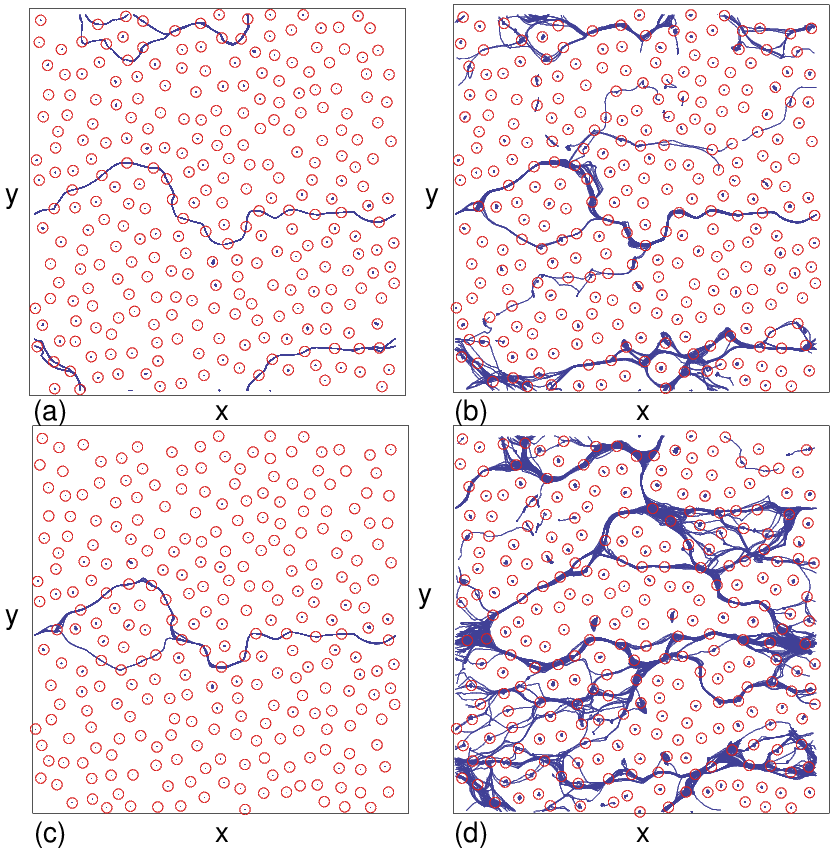
Wigner Crystals
We study the dynamics of Wigner crystals in solid state systems
using a classical particle-based model. Wigner crystal formation
can have implications for metal-insulator transitions, and has
been proposed to occur in two-dimensional electron gases in
a variety of systems including liquid helium. Recent evidence suggests
that Wigner crystals may occur in monolayer semiconductors and
dichalcogenide monolayers, moire heterostructures, and oxides,
while it has been suggested that bilayer Wigner crystals may form
in dichalcogenide heterostructures. A major question that we address
is what is the role of quenched disorder in Wigner crystal phases
and dynamics.
Papers:
-
Depinning, melting and sliding of generalized Wigner crystals in moire systems
C. Reichhardt and C.J.O. Reichhardt
Phys. Rev. Res. 7, 013155 (2025).
arXiv
-
Magnetic field effects and transverse ratchets in charge lattices coupled to asymmetric substrates
C.J.O. Reichhardt and C. Reichhardt
New J. Phys. 25, 113038 (2023).
arXiv
-
Collective dynamics and defect generation for Wigner crystal ratchets
C. Reichhardt and C.J.O. Reichhardt
Phys. Rev. B 108, 0155131 (2023).
arXiv
-
Noise and thermal depinning of Wigner crystals
C. Reichhardt and C.J.O. Reichhardt
J. Phys.: Condens. Matter 35, 325603 (2023).
arXiv
-
Melting, reentrant ordering and peak effect for Wigner crystals with quenched and thermal disorder
C. Reichhardt and C.J.O. Reichhardt
New J. Phys. 25, 043016 (2023).
arXiv
-
Nonlinear dynamics, avalanches and noise for driven Wigner crystals
C. Reichhardt and C.J.O. Reichhardt
Phys. Rev. B 106, 235417 (2022).
arXiv
-
Drive dependence of the Hall angle for a sliding Wigner crystal in a magnetic field
C. Reichhardt and C.J.O. Reichhardt,
Phys. Rev. B 103, 125107 (2021).
arXiv
-
Noise at the crossover from Wigner liquid to Wigner glass
C. Reichhardt and C.J. Olson Reichhardt,
Phys. Rev. Lett. 93, 176405 (2004). arXiv
-
Moving Wigner glasses and smectics: Dynamics of disordered Wigner
crystals
C. Reichhardt, C.J. Olson, N. Gronbech-Jensen, and F. Nori,
Phys. Rev. Lett. 86, 4354 (2001). arXiv
Last modified Nov 17, 2023
